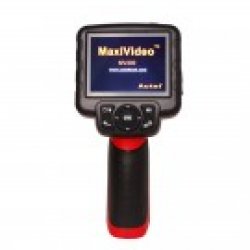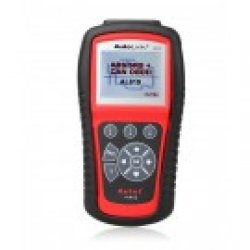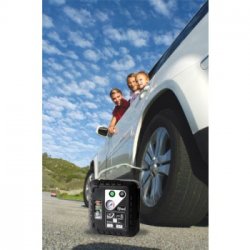Stop Changing Your Oil!

Stop Changing Your Oil!
Breaking the 3,000-Mile Habit
Republished: 04/23/2013 (Original Date: 08/24/2010) – by Philip Reed,Senior Consumer Advice Editor Ronald Montoya,Consumer Advice Editor
Oil chemistry and engine technology have evolved tremendously in recent years,but you’d never know it from the quick-change behavior of American car owners. Driven by an outdated 3,000-mile oil change commandment,they are unnecessarily spending millions of dollars and spilling an ocean of contaminated waste oil.
Chris Risdon,a product education specialist for Toyota agreed,adding that oil technology advances that permit fewer changes are a tool to protect the environment crp123 reviews.”If you’re doing it half as much,that’s 5 quarts of oil times million vehicles a year – that’s a tremendous amount of waste oil that’s not being circulated into the environment.”
Waste oil is a problem exacerbated by too-frequent oil changes,according to the California Integrated Waste Management Board,which has campaigned against the 3,000-mile dictate. The agency says that million gallons of used oil is generated in California annually,but only 59 percent of it is recycled.
Our Fit Gets Taken for a Ride
Before the initial publication of this article in August 2010,we took a 2007 Honda Fit to Jiffy Lube for an oil change to see what might happen to the average car owner. The car had an oil life monitoring system,and the system had recommended the past two oil change intervals at 5,500 miles and 7,600 miles on non-synthetic oil. In both cases,an engine oil analysis revealed that the oil could have provided at least another 2,000 miles of service.
On this occasion,we told the Jiffy Lube service advisor we were considering synthetic Mobil 1 because we heard it could extend our oil change intervals. The service advisor said the synthetic oil could enable the Fit to go 4,000 or 5,000 miles before the oil”burned out.”The Mobil 1 oil change had a price tag of $. The technician also took the opportunity to upsell us,recommending a cabin air filter for $. The total for our visit,after a $15 coupon,was $.
When the car was returned to us,the sticker in the window called for an oil change in 3,000 miles,not the 4,000 or 5,000 miles the service advisor had promised.
If we had been foolish enough to follow Jiffy Lube’s 3,000-mile change schedule (which is essentially the advice given by all quick oil change outlets and dealership service departments),the Fit would have undergone four unnecessary oil changes per year (assuming 15,000 miles per year of driving),wasting $369 and quarts of perfectly good oil. Over five years of the car’s life and 60,000 miles of driving,this would have amounted to $1,847 and 125 quarts of wasted oil. This does not include other”upselling”items at each visit,such as cabin air filters.
Defending the 3 auto diagnostic scanner tool,000-Mile Interval
The quick oil change industry justifies its perpetuation of the 3,000-mile standard by saying that most people drive under”severe”conditions. Jiffy Lube’s quiz,mentioned earlier in this article,is one example of how that notion is reinforced in drivers’ minds. An oil change company representative said the 3,000-mile recommendation is meant to be just that – a recommendation.
In 2010,Scott Cudini,innovations manager for Jiffy Lube,repeatedly called the 3,000-mile interval a good”fallback position,”meant to be a guideline but not a hard-and-fast rule. He added that Jiffy Lube technicians would initiate a”dialogue”with customers about the oil change intervals that apply specifically to their cars.
“In most cases,”Cudini said,”even if customers’ cars have been plastered with that 3,000-mile sticker,they may have been told by the service advisor that,’By the way,Sir/Madam,your interval is 5,500 miles.'”Based on our experience with the Honda Fit at Jiffy Lube,as well as at other quick-change outlets,technicians rarely initiate dialogues that could provide accurate information about oil change intervals. In fact,according to a Jiffy Lube spokesperson,the system for supplying technicians with answers only gives them information from a vehicle’s severe schedule.
Turning Over a New Leaf?
Nearly 10 months after we first published this article,Jiffy Lube announced that it was undertaking a”new approach to oil changes that helps customers access and understand their vehicle manufacturer’s recommendations,and choose the oil change schedule that is best for their needs.”
We witnessed Jiffy Lube’s”new approach”firsthand when we took one of our long-term cars in for an oil change in March 2013. When the sales representative approached us,we told him we didn’t know if we needed an oil change or not. We said we weren’t sure what the intervals were.
The technician looked up the oil change interval on his computer and said it was either 5,000 or 7,500 miles depending on how we drove the car. This,of course,is the traditional severe-versus-normal driving schedule. In the past,quick-change oil shops have tried to get everyone on the severe schedule because it means more business for them. But now,the technician said,”We can set the sticker for whatever you decide.”This is just what we wanted to hear. No more 3,000-mile intervals glaring at us from the little sticker in the corner of the window.
But this was only a sample size of one. And even if all Jiffy Lube locations are onboard with the new approach,there are still hundreds of quick-lube shops that do things the old-fashioned way. Their deep fallback argument in favor of frequent oil changes is that they are a hedge against trouble. You can’t hurt your engine by changing your oil too often,so doesn’t that imply that it might actually help it? Well,no.
Steve Mazor,manager of American Automobile Association’s Research Center,said that more-frequent-than-necessary oil changes will not”gain any additional life for your engine or any improved fuel economy.”He added,”In reality it will make little or no difference to the performance of the vehicle.”
The Right Time To Change Your Oil
So where does this leave the car owner who was raised on the perceived wisdom of the 3,000-mile oil change? For a full discussion,your next stop should be our related article,”When Should You Change Your Oil?,”which will save you hundreds of dollars over the next few years and fully protect your car and its warranty,while limiting the use of a natural resource.
The short answer,meanwhile,is to consult your service manual or Edmunds’ maintenance section to learn your car’s actual oil change schedule. If your car has an oil life monitoring system,don’t try to second-guess it. Understand how it works and follow its guidelines. To probe more deeply into this subject,consider sending a sample of the oil from your next oil change to a lab such as Blackstone Laboratories,for an inexpensive analysis. Our last suggestion? Rip that sticker off your windshield.
Related Links






Ingen kommentarer endnu